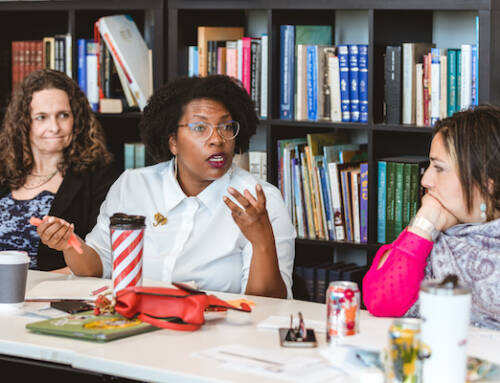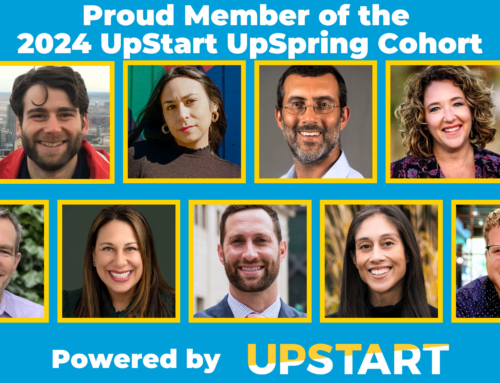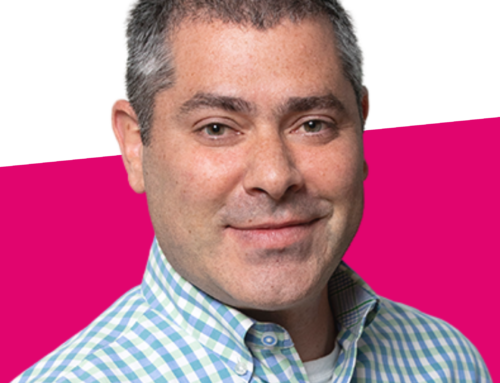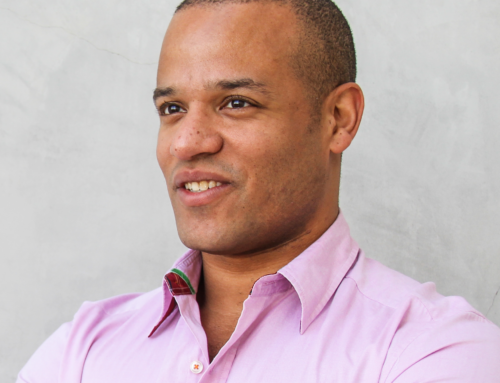Knock knock! Whos there? Interrupting cow. Interrupting Cow who MOO!
I always get a kick out of that one. My sisters preferred variation is interrupting starfish, which ends with an open palm smooshed into ones face.
In his June 29th post Tomorrow and Tomorrow and Tomorrow: Key Questions on Jewish Innovation, Interruption, and Sustainability, Seth Cohen raises the question: how do we ensure thatJewish innovation isnt interrupted?
But I wonder – what founder of an innovative nonprofit hasnt looked up from her desk and been stopped in her tracks by an interruption, hand smooshed into face and all?
Innovation, as defined by Felicia Herman, the Executive Director of the Natan Fund, in her recent article Funding Innovation, means identifying a gap or hole in the system that no one had noticed before, and creating something new to address that need. Innovation often stems from an Aha moment, defined by psychologist John Kounios and cited in William Safires latest New York Times magazine piece On Language: An aha moment is any sudden comprehension that allows you to see something in a different light. This type of comprehension, and the ensuing process of doing something about it, must, to some extent, grapple with interruptions tensions, challenges, and failures. As Neil Simon says, quoted Safires article, the aha! can be the first part of an incompleted sneeze. Try explaining that one to a funder.
Amongst the questions we need to ask in the sector of Jewish social entrepreneurship is: how do we foster innovative Jewish programs and organizations that are elastic and flexible enough to withstand the inevitable interruptions and make a lasting impact on the Jewish world?
One tool that can help us navigate and withstand interruptions is the capacity to hold steady. Marty Linsky and Ronald Heifetz, in an article entitled Leading with an Open Heart, explain this concept: Confronting major change generates a great deal of conflict and resistance. Managing the conflict, dealing with the politics involved, and making people accountable requires an ability to hold steady in the heat of action. If you are a funder, what work do you need to do to, as Herman puts it in her Lesson #2 on Funding Innovation, take risks and tolerate failure? If you are the founder of a new Jewish nonprofit, what work do you need to do to avoid chasing the money, and stand strong in your organizations mission and passion? If you run an established Jewish institution, what work do you need to do to examine whether or not your work is relevant and meaningful, and, holding steady in whatever emerges, begin to explore new pathways. And how can we, as a Jewish community in general, hold steady in the tensions between our denominations, generations, and institutions new and old, to explore what they teach us, and use that data to work towards a shared, sustainable purpose? These interruptions are part and parcel of the process of innovation, and it is the extent of our ability to hold steady as they rage around us that will determine our success. We must learn to stay in the discomfort long enough to understand what the interruptions often self imposed! are teaching us about ourselves and our community.
Cohen implies a dichotomy between interruption and sustainability. He cautions: we may find that our innovation is interrupted and – for a people concerned with its survival – we need innovation that is sustainable. I would argue that that interruption – that realm of discomfort, lack of clarity, tenstion, insecurity – is actually necessary for ultimate sustainability, and that those individuals and organizations who can tolerate interruption, and hold steady in it, are in fact those individuals and organizations that will ultimately succeed.
This blog is cross posted on ejewish philanthropy.
Our purpose is to enable entrepreneurs to bring bold Jewish ideas to light. We help them reach Up to people in new ways that are meaningful, more inclusive, and create a brighter future for our Jewish community and the world we share.





